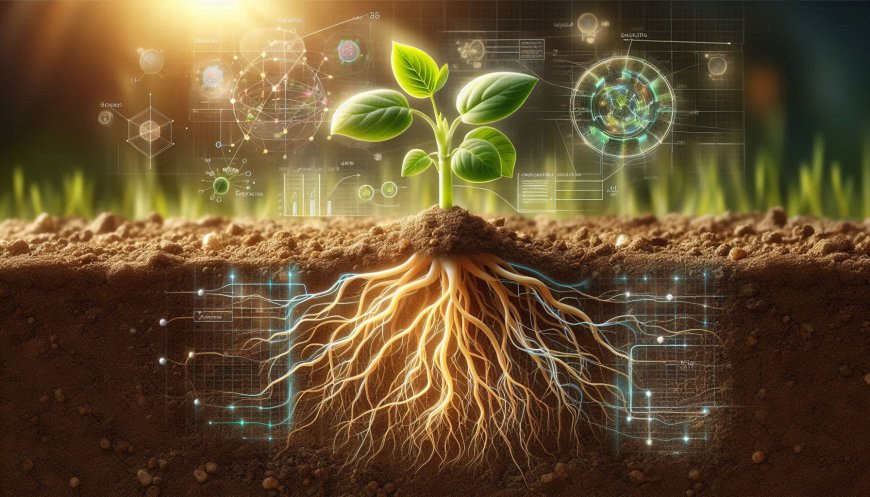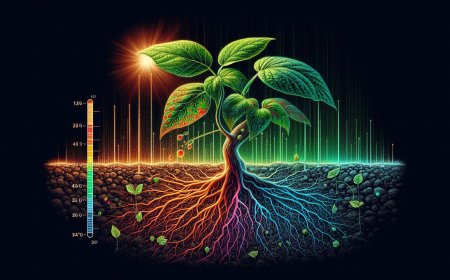Geotropism: The Gravity-Driven Growth in Plants
Explore geotropism, the biological response of plants to gravity, with a detailed look at how roots grow downward and stems grow upward. Discover how this growth aids plant survival and agricultural applications.

In the fascinating world of plants, growth is not just a random or passive process; it's highly responsive to environmental cues. One of the most captivating mechanisms through which plants sense and respond to their surroundings is geotropism—the directional growth influenced by gravity. This unique phenomenon ensures that plants grow in ways that optimize their survival and reproduction, regardless of how they are positioned.
What is Geotropism?
Geotropism, also known as gravitropism, refers to a plant's growth response to gravity. This growth behavior enables different parts of the plant to grow in specific directions in response to gravitational pull. Roots, for instance, exhibit positive geotropism, growing downward into the soil, anchoring the plant and seeking nutrients and water. In contrast, stems display negative geotropism, growing upward toward the sunlight, which is crucial for photosynthesis.
Types of Geotropism
There are two primary types of geotropism, based on the direction of growth relative to the gravitational pull:
- Positive Geotropism: Roots are the most common example of positive geotropism. When seeds germinate, roots extend downward, penetrating the soil to absorb essential nutrients and water. This growth direction enhances a plant's stability and its ability to thrive in its environment.
- Negative Geotropism: Stems and shoots demonstrate negative geotropism by growing upwards, away from gravitational pull. This response allows the plant to reach sunlight more efficiently, ensuring adequate energy for photosynthesis. The upward growth pattern also helps flowers and fruits to be well-positioned for pollination and seed dispersal.
How Does Geotropism Work?
The mechanism behind geotropism is rooted in plant hormones, particularly a group called auxins. Auxins regulate growth by redistributing themselves according to gravity's direction. In a stem, auxins accumulate on the lower side, stimulating cells to elongate faster on that side and causing the stem to curve upward. In roots, however, the higher concentration of auxins on the lower side actually inhibits cell elongation, causing the root to bend downwards. This differential growth in response to hormone distribution is what drives the directionality of geotropism.
Geotropism in Action: Plant Adaptations and Survival
Geotropism is vital for plants in a variety of conditions. In nature, it provides young plants with the innate sense to grow in the correct directions immediately after germination. Even if a seed lands in an awkward position, the root will always find its way down, and the shoot will seek upward light. This response to gravity ensures stability, water absorption, and access to light—all essential for the plant's survival.
Geotropism in Agriculture and Horticulture
Understanding geotropism is essential in agriculture and horticulture, as it enables scientists and farmers to optimize plant growth and crop yield. Knowing how plants respond to gravity helps in crop management, container planting, and even in innovative growing methods like hydroponics, where roots and shoots are carefully guided for maximum efficiency.
Future Implications: Geotropism in Space Exploration
One of the most intriguing areas of geotropism research involves studying plants' growth behavior in space. In the absence of gravity, how would plants orient themselves? Space experiments have shown that plants can still grow, but they rely on other environmental cues, like light (phototropism). Understanding these responses can pave the way for sustainable food production in extraterrestrial environments.
Conclusion
Geotropism, though often taken for granted, is a crucial biological process that showcases the remarkable ways plants adapt to their surroundings. From ensuring proper root and shoot orientation to supporting human agricultural endeavors, geotropism highlights how plants have evolved to make the most of their environment. As we learn more about this gravity-driven phenomenon, we gain valuable insights into both the resilience of plant life and the potential of sustainable farming for future generations.
What's Your Reaction?




























